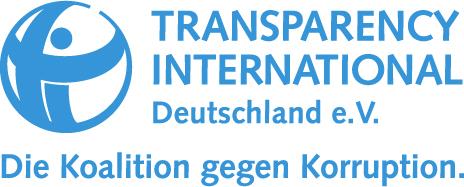The enduring alliance between Australia and the United States has long been a cornerstone of regional security and strategic cooperation in the Indo-Pacific. However, recent discussions have increasingly spotlighted the role of transparency in strengthening this bilateral relationship. The Lowy Institute, Australia’s leading independent think tank, has taken a closer look at how openness and clear communication can enhance trust, accountability, and public support within the alliance. This article explores the latest insights from the Lowy Institute on the significance of transparency in sustaining and evolving the Australia-US partnership amid shifting geopolitical dynamics.
Transparency Challenges in the Australia US Alliance and Their Strategic Implications
Despite its longstanding nature, the alliance between Australia and the United States faces intrinsic transparency challenges that complicate strategic decision-making. One primary issue is the asymmetry in information sharing, where sensitive intelligence and classified operational details are often selectively disclosed, leading to trust deficits. This selective transparency can foster misinterpretations or miscalculations, especially amid rapidly evolving geopolitical crises in the Indo-Pacific region.
Furthermore, divergent national interests and domestic political pressures can hinder open communication channels. Key factors influencing these transparency hurdles include:
- Operational security concerns: Necessitating discretion but limiting comprehensive information exchange.
- Distinct foreign policy priorities: Different threat perceptions influence what each partner deems shareable.
- Public accountability obligations: Domestic scrutiny constrains the extent of openness regarding alliance activities.
| Challenge | Strategic Implication |
|---|---|
| Information asymmetry | Reduced alignment in joint military planning |
| Conflicting priorities | Potential for policy divergence in crisis response |
| Public transparency demands | Limits on operational flexibility |
As both nations navigate these complex transparency dynamics, the strategic fabric of the alliance risks fragmentation if not carefully managed. Enhanced institutional dialogues and trust-building mechanisms are necessary to mitigate misunderstandings and maintain operational coherence. Otherwise, the alliance’s ability to present a united front amid rising regional tensions could be compromised, undermining broader objectives of stability and deterrence.
Assessing the Impact of Secrecy on Bilateral Trust and Regional Stability
Secrecy within the Australia-US alliance has long been a double-edged sword, underpinning sensitive defense collaborations while simultaneously risking erosion of bilateral trust. While classified operations and undisclosed strategies protect national interests, excessive opacity can fuel suspicion among Australian policymakers and the public. This delicate balance challenges diplomatic channels, potentially hindering seamless cooperation and weakening the alliance’s credibility in the Indo-Pacific region.
Experts argue that a calibrated increase in transparency could serve as a catalyst for enhanced mutual confidence and regional stability. Clear communication about shared objectives, counterbalanced by safeguarded intelligence, allows for informed public discourse and stronger parliamentary oversight. Key factors influencing this dynamic include:
- Intelligence sharing mechanisms – how much and what type of information is disclosed
- Public accountability – the extent to which government actions are known to citizens
- Regional signaling – the message secrecy or openness sends to neighboring countries
| Aspect | Secrecy Impact | Transparency Benefit |
|---|---|---|
| Trust | Potential erosion over undisclosed actions | Reinforces confidence and predictability |
| Policy Coordination | Limited by restricted information flow | Enables synchronized strategic planning |
| Regional Signaling | Could foster suspicion or misinterpretation | Promotes openness and deters misconceptions |
Enhancing Accountability Through Clear Communication and Joint Oversight Mechanisms
Effective communication between Australia and the United States serves as the backbone for enhanced accountability within their alliance. By establishing regular, transparent dialogues, both nations can preempt misunderstandings and foster mutual trust. Key to this process are clearly defined protocols that outline the flow of information across military, diplomatic, and intelligence channels. This ensures that stakeholders at all levels are informed and engaged, reducing the likelihood of unilateral actions that could compromise shared goals.
Moreover, joint oversight mechanisms reinforce this accountability framework by providing concrete structures for monitoring and evaluation. These include:
- Bi-national committees tasked with reviewing operational compliance and strategic alignment.
- Shared reporting systems that enhance transparency over sensitive programs and resource allocations.
- Regular audits conducted by independent bodies to verify adherence to agreed standards.
| Oversight Mechanism | Purpose | Frequency |
|---|---|---|
| Bi-national Committees | Operational & strategic alignment | Quarterly |
| Shared Reporting Systems | Transparency of programs and resources | Monthly |
| Independent Audits | Compliance verification | Annual |
The Way Forward
As the Australia-US alliance continues to navigate an increasingly complex geopolitical landscape, transparency remains a critical component in sustaining trust and cooperation between the two nations. The Lowy Institute’s analysis underscores that open communication and clear strategic intentions are essential not only for bilateral relations but also for maintaining regional stability. Moving forward, both Canberra and Washington will need to prioritize transparency to address emerging challenges and reinforce their shared commitments in the Indo-Pacific.




